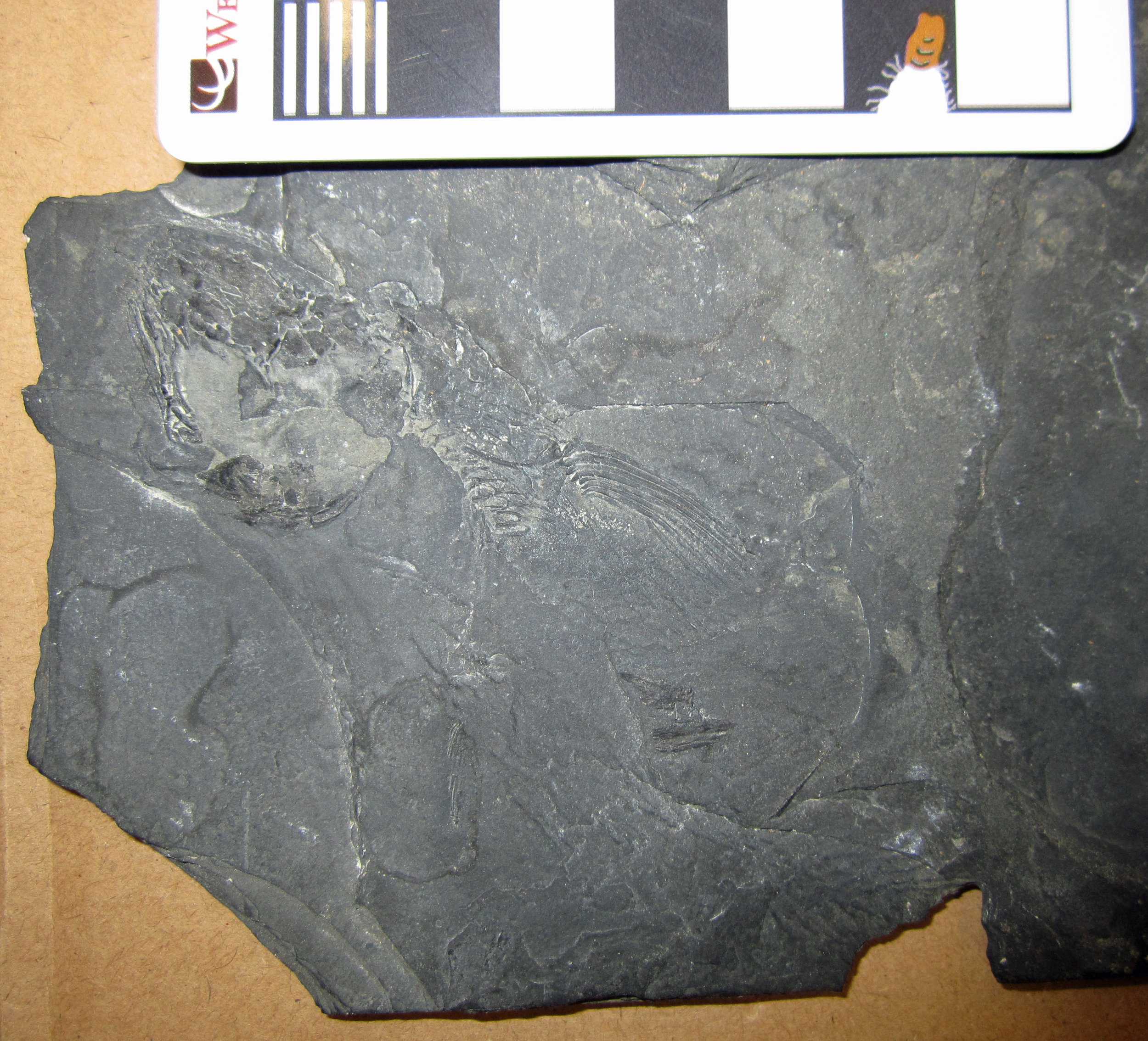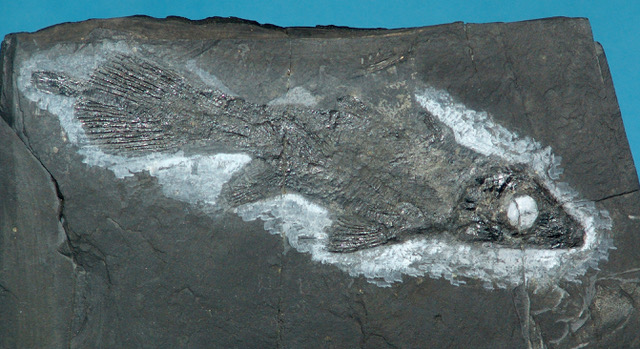 In 1938, Marjorie Courtenay-Latimer, a naturalist at the East London Museum in South Africa, discovered a bizarre fish in a fisherman's haul. This remarkable fish was later given the genus name Latimeria to honor the woman who first recognized its importance. Courtenay-Latimer's discovery was the first indication that an ancient type of fish, thought to have gone extinct at the end of the Cretaceous Period, was alive and well in the modern ocean. Latimeria is the living coelacanth.Coelacanths have a long fossil record, going all the way back to the Devonian Period, more than 400 million years ago. They were extremely successful, inhabiting both freshwater and saltwater, evolving a great range of body shapes, and in some cases, growing to huge sizes of 15 feet or more. The Western Science Center's coelacanth fossil was discovered in New Jersey by the late fossil collector Harley Garbani and donated to the museum by his wife, Mary Garbani.This little fossil fish probably belongs to the genus Diplurus, which lived during the Early Jurassic Epoch, around 200 million years ago. In the photo, the skull is towards the upper left, with the tail in the bottom right. Part of the vertebral column is visible behind the skull, as well as parts of at least two fins. The second photo is a much more complete specimen of Diplurus, photographed by Alton Dooley at the Cleveland Museum of Natural History, showing the full body shape.Post by Curator Dr. Andrew McDonald
In 1938, Marjorie Courtenay-Latimer, a naturalist at the East London Museum in South Africa, discovered a bizarre fish in a fisherman's haul. This remarkable fish was later given the genus name Latimeria to honor the woman who first recognized its importance. Courtenay-Latimer's discovery was the first indication that an ancient type of fish, thought to have gone extinct at the end of the Cretaceous Period, was alive and well in the modern ocean. Latimeria is the living coelacanth.Coelacanths have a long fossil record, going all the way back to the Devonian Period, more than 400 million years ago. They were extremely successful, inhabiting both freshwater and saltwater, evolving a great range of body shapes, and in some cases, growing to huge sizes of 15 feet or more. The Western Science Center's coelacanth fossil was discovered in New Jersey by the late fossil collector Harley Garbani and donated to the museum by his wife, Mary Garbani.This little fossil fish probably belongs to the genus Diplurus, which lived during the Early Jurassic Epoch, around 200 million years ago. In the photo, the skull is towards the upper left, with the tail in the bottom right. Part of the vertebral column is visible behind the skull, as well as parts of at least two fins. The second photo is a much more complete specimen of Diplurus, photographed by Alton Dooley at the Cleveland Museum of Natural History, showing the full body shape.Post by Curator Dr. Andrew McDonald
